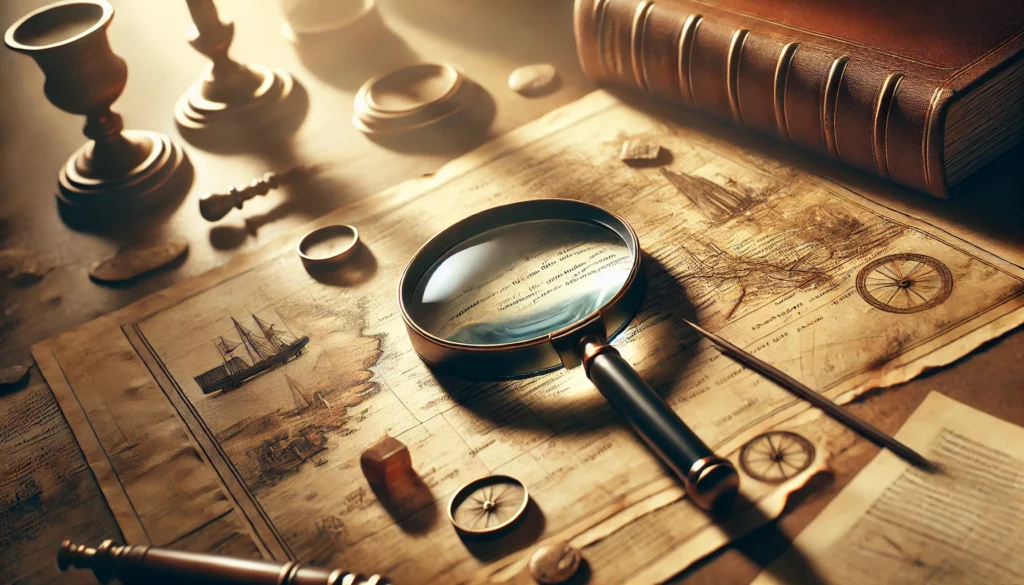Historical myths and misconceptions have a profound impact on our understanding of the past and, by extension, our present. These false narratives, often deeply ingrained in popular culture and even educational systems, can shape national identities, influence policy decisions, and perpetuate stereotypes. As an academician and Philippine History expert, I find it crucial to address and debunk these myths, promoting a more accurate and nuanced understanding of historical events.
The origins of historical myths
Historical myths often arise from a combination of factors:
- Oversimplification of complex events
- Nationalistic propaganda
- Misinterpretation of primary sources
- Cultural biases and stereotypes
- Lack of access to accurate historical information
These factors contribute to the creation and perpetuation of false narratives that can persist for generations, shaping public perception and even influencing academic discourse.
Common Historical Myths in Philippine History
Let’s explore some of the most prevalent myths in Philippine history and examine the facts that debunk these misconceptions.
Myth 1: The Philippines was “discovered” by Ferdinand Magellan
This widely held belief oversimplifies the complex history of the Philippine archipelago and ignores the rich cultures and civilizations that existed long before European contact.
The facts:
- The Philippines was already inhabited by various indigenous groups with sophisticated societies and trade networks.
- Chinese, Arab, and other Asian traders had been visiting the islands for centuries before Magellan’s arrival.
- Magellan’s expedition in 1521 marked the first documented European contact with the Philippines, but it was not a “discovery” in the true sense of the word.
Myth 2: The Spanish colonized the entire Philippine archipelago
Many assume that Spanish control extended uniformly across all Philippine islands during the colonial period.
The facts:
- Spanish control was primarily concentrated in lowland areas and major urban centers.
- Many upland and southern regions, particularly in Mindanao and the Sulu archipelago, remained largely autonomous or under minimal Spanish influence.
- The Spanish never fully conquered the Muslim sultanates in the south, leading to a complex relationship between these areas and the colonial government.
Myth 3: The Philippine Revolution was a unified national movement
The struggle for independence is often portrayed as a singular, cohesive movement against Spanish rule.
The facts:
- The revolution was composed of various factions with different goals and ideologies.
- Regional differences and personal rivalries often led to conflicts within the revolutionary movement.
- The Katipunan, while significant, was not the only revolutionary organization active during this period.
Debunking Colonial-Era Myths
Colonial narratives have significantly influenced our understanding of Philippine history. Let’s examine some myths from this era and uncover the historical realities.
The “benevolent assimilation” myth
The notion that American colonization was a benevolent mission to “civilize” and “educate” Filipinos is a persistent myth that obscures the complexities of this period.
The facts:
- The Philippine-American War (1899-1902) resulted in significant Filipino casualties and widespread destruction.
- While the U.S. introduced public education and some infrastructure improvements, these efforts often served American economic and political interests.
- Many Filipinos actively resisted American rule, challenging the narrative of willing assimilation.
Table: Casualties in the Philippine-American War
| Group | Estimated Casualties |
|---|---|
| Filipino civilians | 200,000 – 1,000,000 |
| Filipino combatants | 20,000 – 44,000 |
| American soldiers | 4,200 |
The myth of Spanish cultural domination
It’s often assumed that Spanish culture completely supplanted indigenous Philippine cultures during the colonial period.
The facts:
- While Spanish influence was significant, particularly in religion and language, many aspects of indigenous culture persisted.
- Syncretism occurred in various cultural practices, blending Spanish and indigenous elements.
- Regional languages and many pre-colonial traditions survived throughout the Spanish colonial period.
World War II Myths in Philippine History
The Second World War is a period rife with mythmaking and misunderstandings. Let’s examine some common misconceptions about this crucial time in Philippine history.
Myth: The Philippines was liberated solely by American forces
This myth overlooks the significant contributions of Filipino guerrillas and civilians in the resistance against Japanese occupation.
The facts:
- Filipino guerrilla units played a crucial role in intelligence gathering and sabotage operations against Japanese forces.
- Many Filipinos actively participated in the resistance movement, risking their lives to support Allied efforts.
- The liberation of the Philippines was a joint effort involving American forces, Filipino guerrillas, and civilian resistance.
Myth: The Japanese occupation was uniformly brutal across the Philippines
While the Japanese occupation was undoubtedly a dark period in Philippine history, the experiences varied across different regions and communities.
The facts:
- Some areas, particularly in the Visayas and Mindanao, experienced less direct Japanese control.
- Collaborationist governments, such as the Second Philippine Republic under Jose P. Laurel, operated with varying degrees of autonomy.
- Experiences of occupation differed between urban and rural areas, with some rural communities maintaining a degree of normalcy.
Post-War Myths and Misconceptions
The post-war period in Philippine history is equally susceptible to mythmaking. Let’s examine some common misconceptions about this era.
The “Golden Age” myth of the Marcos era
The notion that the Marcos regime (1965-1986) represented a “golden age” of Philippine development is a persistent myth that requires critical examination.
The facts:
- While there were some infrastructure developments during this period, they came at the cost of massive foreign debt and economic instability.
- Human rights abuses and corruption were widespread during the Marcos era.
- The Philippine economy experienced a severe downturn in the early 1980s, contradicting claims of sustained prosperity.
Table: Economic Indicators During the Marcos Era
| Year | GDP Growth Rate | Inflation Rate | External Debt (in billion USD) |
|---|---|---|---|
| 1965 | 5.8% | 4.8% | 0.6 |
| 1975 | 6.5% | 6.8% | 4.1 |
| 1985 | -7.3% | 23.1% | 26.2 |
Myth: The 1986 EDSA People Power Revolution instantly solved the Philippines’ problems
While the EDSA Revolution was a significant moment in Philippine history, its impact and aftermath are often oversimplified.
The facts:
- The transition to democracy after Marcos was complex and fraught with challenges.
- Many of the structural issues that existed before the revolution, such as economic inequality and political dynasties, persisted.
- The post-EDSA period saw continued political instability, including coup attempts and ongoing corruption scandals.
The Role of Historical Revisionism
Historical revisionism plays a significant role in perpetuating myths and misconceptions about Philippine history. It’s important to distinguish between legitimate historical reinterpretation based on new evidence and politically motivated attempts to distort the past.
Types of historical revisionism:
- Scholarly revisionism: Based on new evidence or interpretations, aimed at improving historical understanding.
- Negationism: Denial or distortion of established historical facts, often for political or ideological reasons.
- Apologism: Attempts to justify or minimize historical atrocities or controversial actions.
Understanding these distinctions is crucial for critically evaluating historical narratives and identifying potential biases or distortions.
The Impact of Social Media on Historical Misconceptions
In the digital age, social media platforms have become powerful tools for disseminating both accurate historical information and misleading myths. This phenomenon presents both challenges and opportunities for historical education.
Challenges of historical information on social media:
- Rapid spread of misinformation and unverified claims
- Echo chambers reinforcing existing beliefs and misconceptions
- Oversimplification of complex historical events for easy consumption
Opportunities for historical education on social media:
- Wider access to historical resources and primary sources
- Platforms for historians and educators to engage directly with the public
- Potential for interactive and engaging historical content
Navigating this landscape requires developing critical thinking skills and media literacy to distinguish between credible historical information and misleading narratives.
The Importance of Primary Sources in Debunking Myths
One of the most effective ways to challenge historical myths is through the careful examination of primary sources. These firsthand accounts and documents provide valuable insights into historical events and can often contradict popular misconceptions.
Key primary sources for Philippine history:
- Spanish colonial records and correspondence
- American colonial administrative documents
- Personal diaries and letters of historical figures
- Newspapers and periodicals from different historical periods
- Official government records and proclamations
By encouraging the use and critical analysis of these primary sources, we can promote a more nuanced and accurate understanding of Philippine history.
The Role of Education in Combating Historical Myths
Educational institutions play a crucial role in shaping historical narratives and either perpetuating or debunking myths. It’s essential to examine how history is taught and to promote critical thinking skills among students.
Strategies for improving historical education:
- Emphasizing historical thinking skills over rote memorization
- Incorporating diverse perspectives and voices in historical narratives
- Encouraging students to engage with primary sources and conduct their own research
- Promoting awareness of historiography and the evolving nature of historical interpretation
By implementing these strategies, we can foster a more critical and nuanced understanding of history among future generations.
Conclusion: The Ongoing Battle Against Historical Myths
Debunking historical myths and misconceptions is an ongoing process that requires vigilance, critical thinking, and a commitment to accuracy. As we continue to uncover new evidence and reexamine our understanding of the past, it’s crucial to remain open to new interpretations while maintaining a healthy skepticism towards sensationalized or oversimplified narratives.
By challenging these myths, we not only gain a more accurate understanding of our history but also develop a more nuanced perspective on our present and future. The pursuit of historical truth is not just an academic exercise; it’s essential for fostering informed citizenship, promoting social justice, and building a more inclusive and equitable society.
As we move forward, let us commit to questioning our assumptions, seeking out diverse perspectives, and engaging critically with the historical narratives that shape our understanding of the Philippine past. Only through this ongoing process of inquiry and reflection can we hope to build a more accurate and comprehensive understanding of our rich and complex history.
Disclaimer: While every effort has been made to ensure the accuracy of the information presented in this blog post, historical research is an ongoing process, and new evidence may emerge that challenges or refines our current understanding. Readers are encouraged to report any inaccuracies or provide additional information for prompt review and potential updates to the content. The author and the institution remain committed to maintaining the highest standards of historical accuracy and welcome constructive feedback from our readers.




